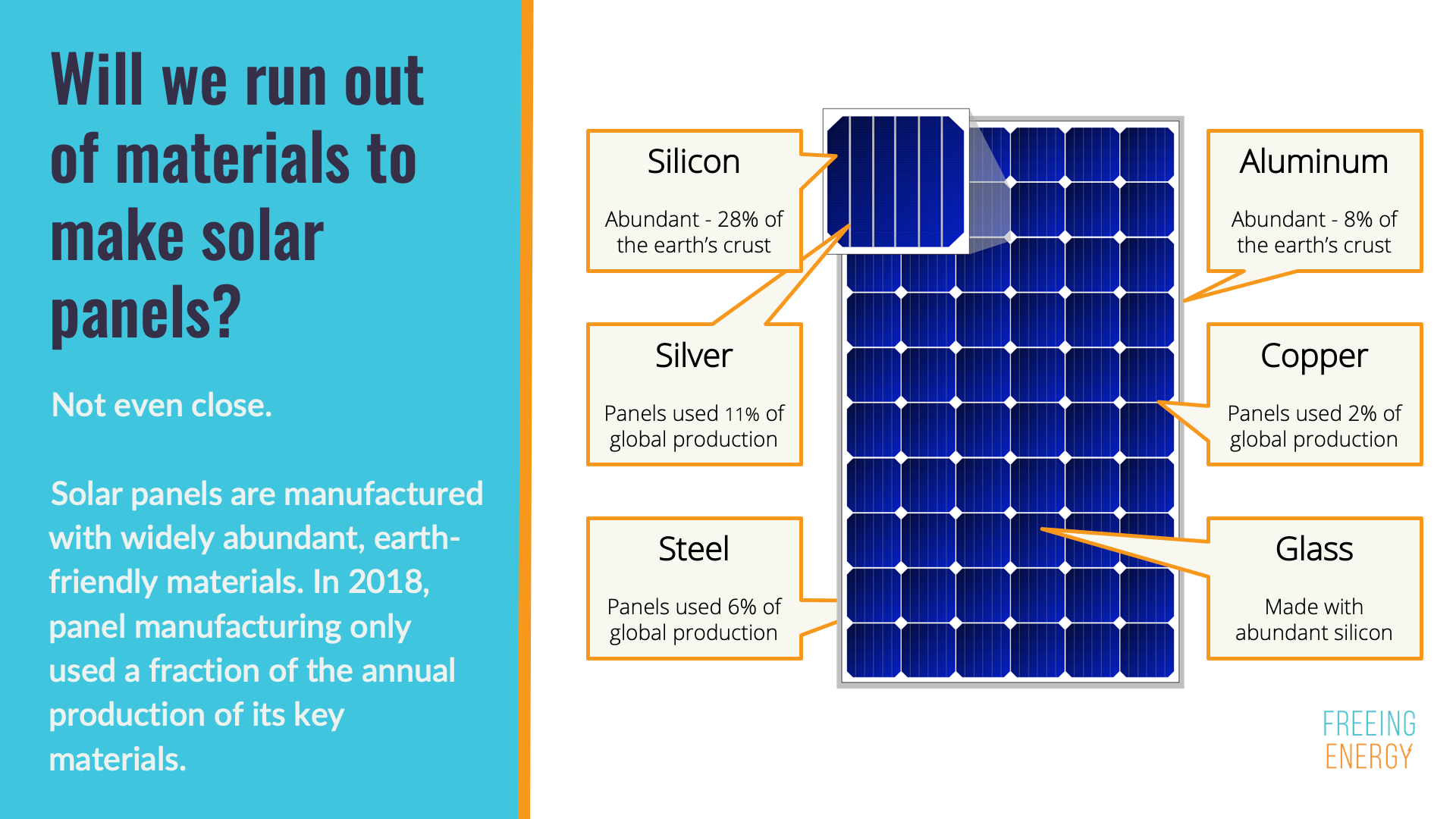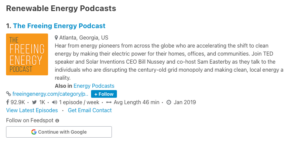Quick summary
Solar photovoltaic technology uses abundant, earth-friendly materials like aluminum, silicon, steel, and glass. Even the most optimistic projections for solar won’t strain their availability. Materials like silver and copper are less abundant but solar only uses about 2% and 11% respectively of their existing supply chains (in 2018).
A deeper look at the materials inside a solar installation
As the adoption of solar technology continues accelerating across the world, skeptics have raised concerns that there simply aren’t enough materials to build all the solar farms required. It turns out that solar technology is actually pretty straightforward, consisting almost entirely of abundant, earth-friendly materials like aluminum, silicon, steel, and glass. Solar also uses relatively smaller amounts of more expensive materials silver and copper. Let’s take a look at each one.
- ALUMINUM is used in the frames on the panels and on the cells themselves. It is the third most abundant material on earth, making up 8% of the earth’s crust.
- SILICON forms the foundation for solar cells. It is the second most abundant material, making up 28% of the earth’s crust.
- STEEL is often used for solar racking, the framework that attaches panels to roofs or to the ground. In 2018, an estimated 5.8 million tons of steel were used in US solar installations1, about 6% of the 100 million tons used per year in the US.
- GLASS makes up the majority of a panel’s weight, letting light through while protecting the cells from moisture and dirt. The main component of glass is widely abundant silicon. However, more glass manufacturing may be required. According to an MIT paper, the glass industry would need to increase its current annual capacity by 29% to power 50% of the US with solar2.
GET MONTHLY NEWS & ANALYSIS
Unsubscribe anytime. We will never sell your email or spam you.
- COPPER. Each year, about 20 million tonnes of copper are mined globally against known reserves of 2 billion tonnes3. At 4-5 tonnes per megawatt, photovoltaic solar used about 424,000 tonnes or about 2% of total production in 2018.
- SILVER is the smallest component of a solar panel by weight but it is also the most expensive. Its high cost has pushed researchers to steadily decrease the silver required, from 400mg in per cell 2007 to less than 100 mg in 2019. It is predicted to continue falling to 50 mg by 20294. According to the Silver Institute, 851 million ounces of silver were mined in 2017, of which 94 million ounces were used for solar, about 11%. Their 2020 report predicts that silver “thrifting” will outpace manufacturing growth, with silver’s use in solar having peaked in 2019.
The MIT study mentioned above looked at all these materials and concluded:
There appear to be no major commodity material constraints for terawatt-scale PV deployment through 2050. [In fact]Military aircraft production in the United States grew by one-to-two orders of magnitude between 1939 and 1944, highlighting the tremendous level of growth that is possible for commodity-based goods.
In short, there are many constraints to powering the world with 100% clean energy but when it comes to solar, raw materials will not one of them. Even if we start seeing supply constraints, most of the materials in solar are easily recyclable (see: Will waste from retiring solar panels overrun our future landfills?)
- Myths – Solar (smy).xlsx, Freeing Energy, tab mwh.13 [↩]
- “MIT Study on the Future of Solar Energy,” MIT, page 132 [↩]
- “The World Copper Fact Book”, International Copper Study Group, page 6 [↩]
- “2018 Results”, International Technology Roadmap for Photovoltaics 2018 results (ITRPV), page 11 [↩]





